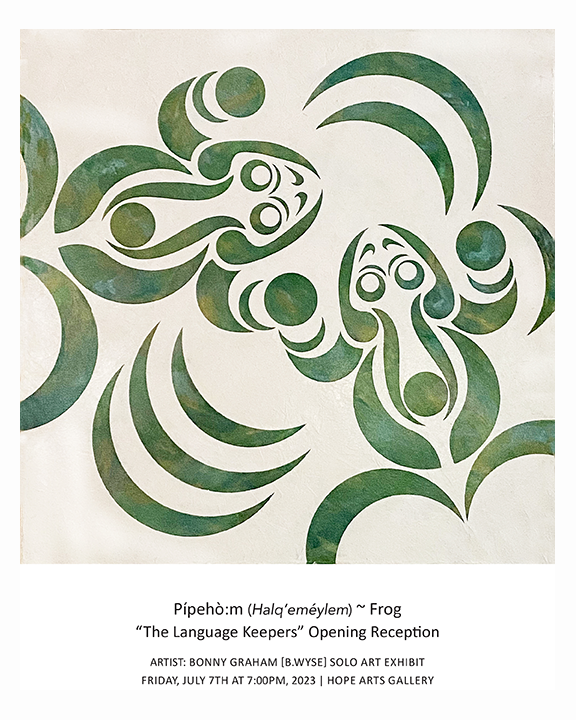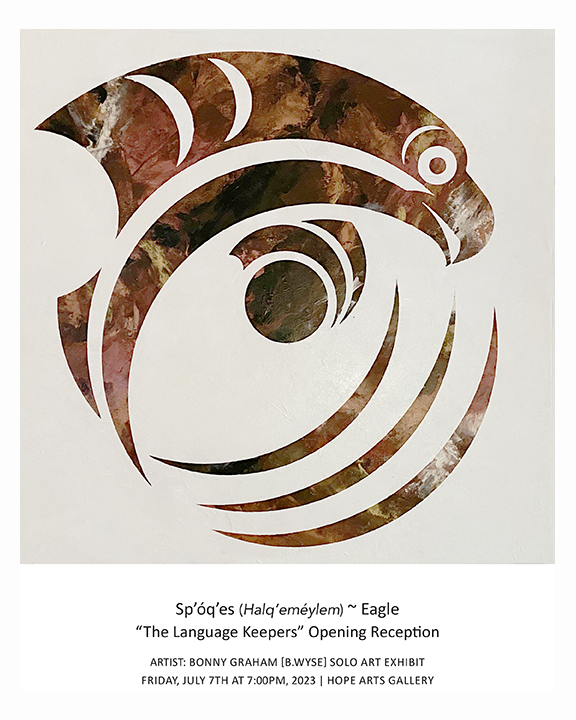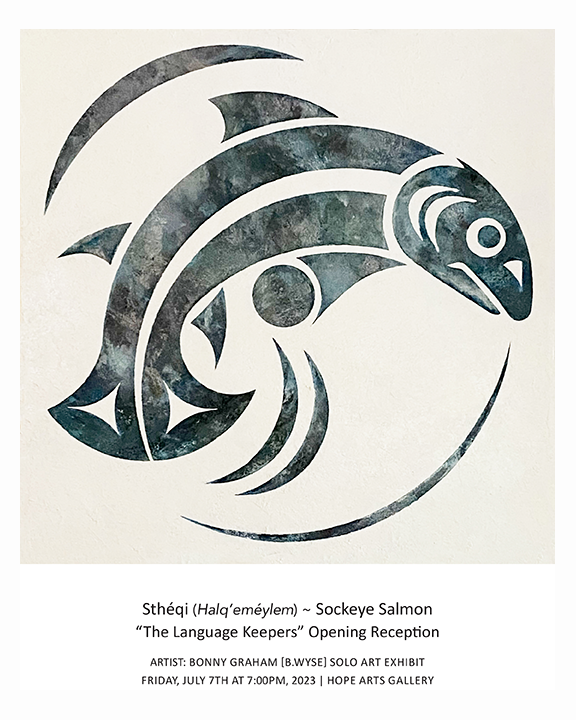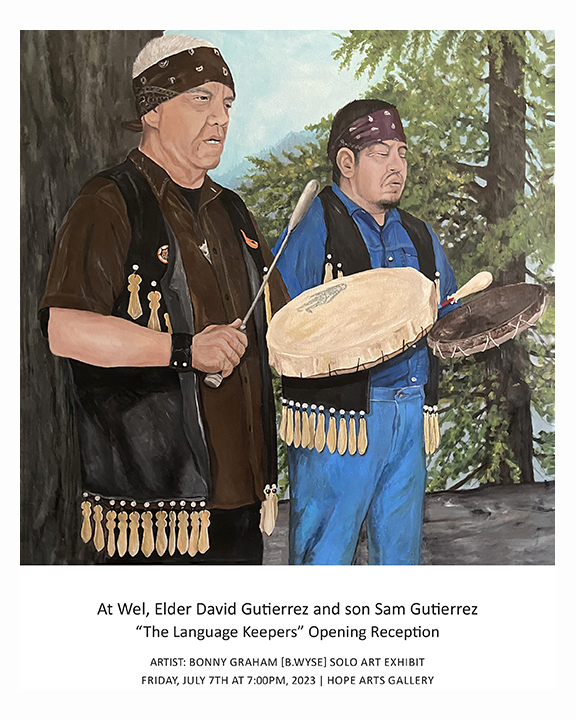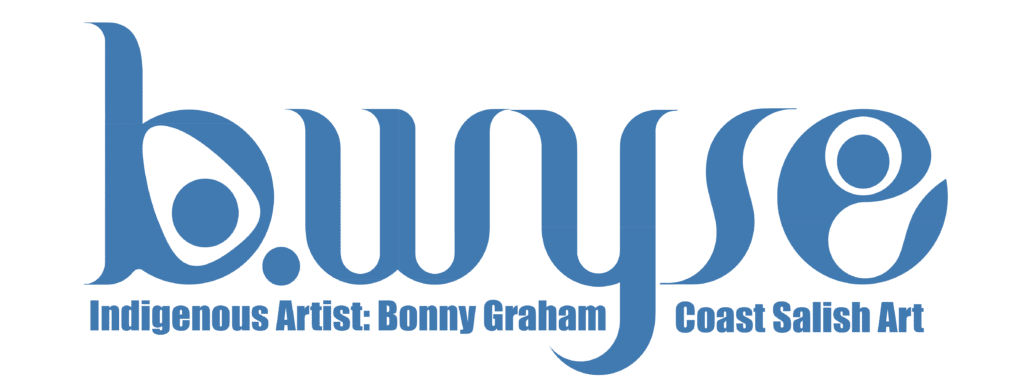
Bonny Graham, also known as B.Wyse, is a Coast Salish artist and award-winning graphic designer from the Stó:lō community of Hope, BC, with ancestral roots in the Snuneymuxw First Nation. For over 25 years, she has created paintings, prints, and graphic designs inspired by her Indigenous heritage and the Halq’emeylem Lanuage.

Through B.Wyse Productions, Bonny developed a Coast Salish–inspired font to visually celebrate the Halq’eméylem language, working closely with fluent speakers and Elders. Her work has been featured at the 2010 Winter Olympics, UFV, Chilliwack General Hospital, and in public art projects like United at the Vedder Road roundabout in Chilliwack.
Bonny also leads school-based programs blending art and language, guiding youth in projects that honour their culture and community. In addition to her creative work, she serves as an elected councillor for the District of Hope, where she continues to advocate for Indigenous presence, visibility, and connection.
B.Wyse on CBC’s Still Standing

Watch Jonny Harris, Bonny Graham (B.Wyse), and Naxaxalhts’i “Sonny” McHalsie discuss Stó:lō Tourism’s “Bad Rock” Tours – a local cultural tour that teaches about the unique relationship between the Stó:lō, “the River People”, the land and their environment.
Ey kw’as ey emi -An Indigenous Welcome to Hope, BC
Designed in collaboration with Tourism Hope, Cascades & Canyons, local Indigenous artist, Bonny Graham, and the District of Hope, these banners welcome visitors and locals to Hope in Halq’eméylem language as well as English.
PUBLIC ARTWORK
VEDDER ROUNDABOUT INSTALLATION
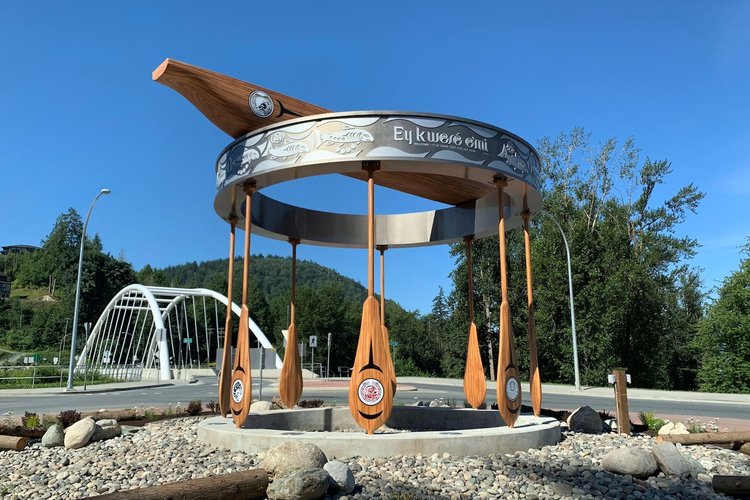
HOPE, BC. WELCOME SIGN
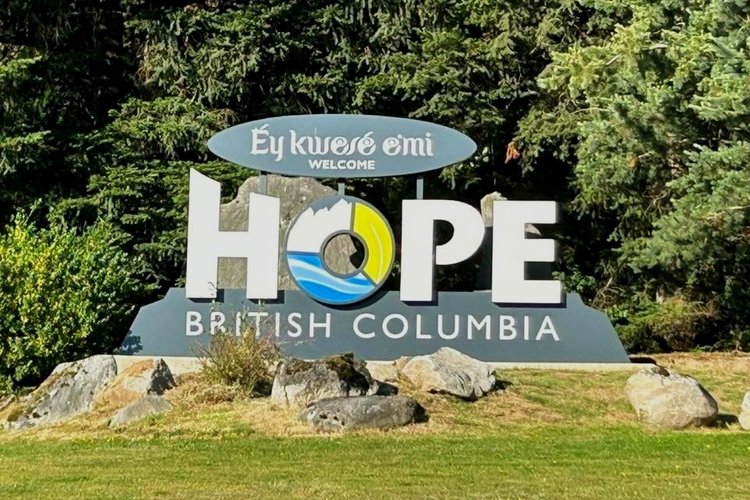
CHILLIWACK PRIDE FLAGS
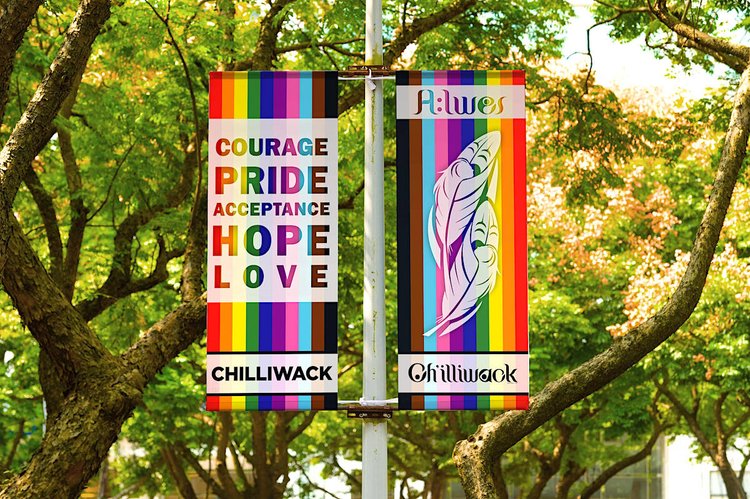
Fine Art Paintings and Prints
The Language Keepers
A Solo Exhibition by Bonny
The Language Keepers is a compelling solo exhibition by Bonny that pays tribute to the resilience and cultural legacy of the Stó:lō people. This collection features evocative portraiture of Stó:lō Elders and Knowledge Keepers who have been instrumental in the revitalization and preservation of the Halq’eméylem language—a cornerstone of identity, heritage, and intergenerational knowledge.
Alongside these portraits, the exhibition includes powerful representations of animals that hold deep symbolic and spiritual significance within Stó:lō culture. Each work serves as a visual narrative, honoring the individuals and traditions that sustain the living language and cultural memory of the Stó:lō Nation.


